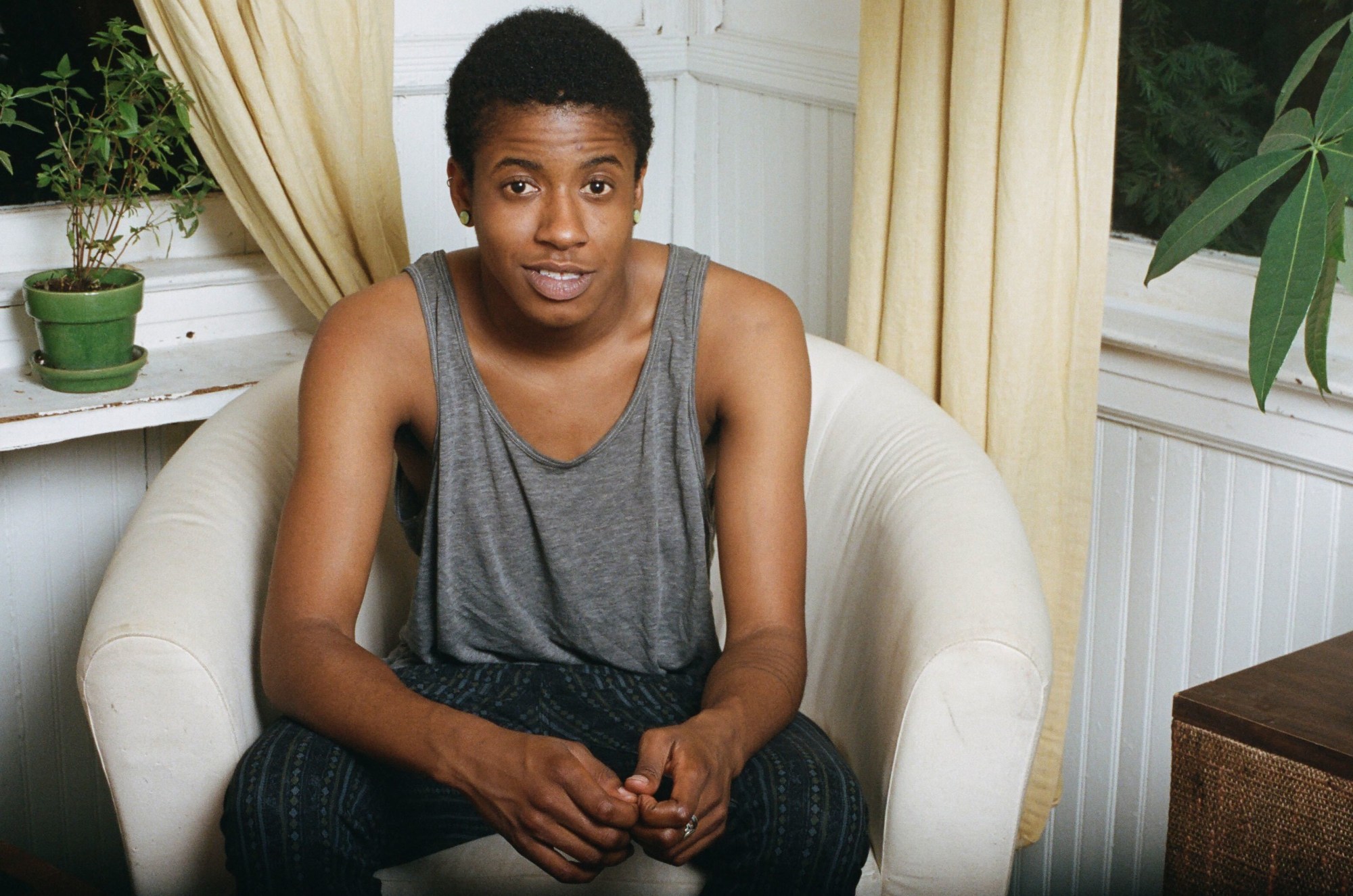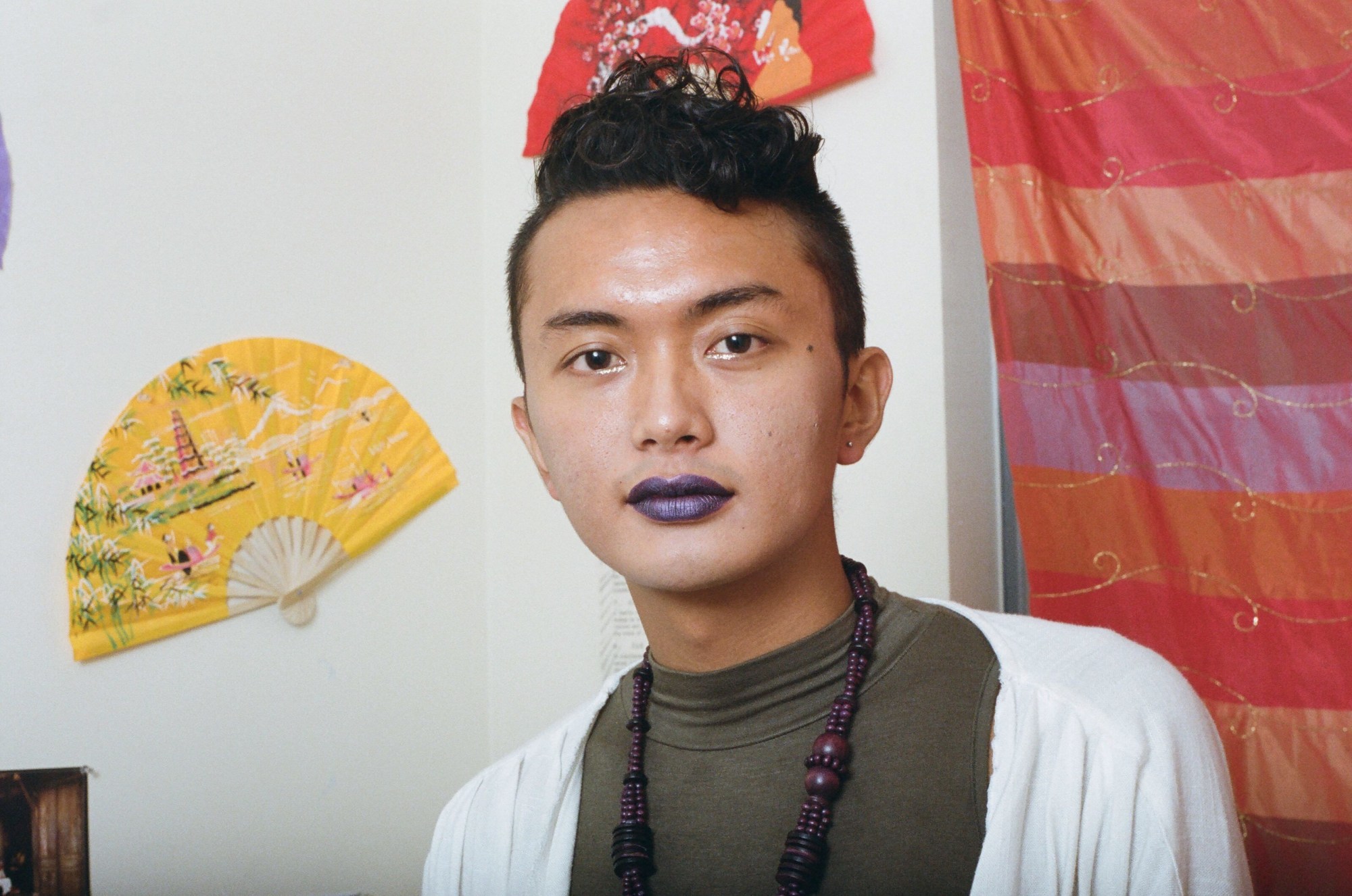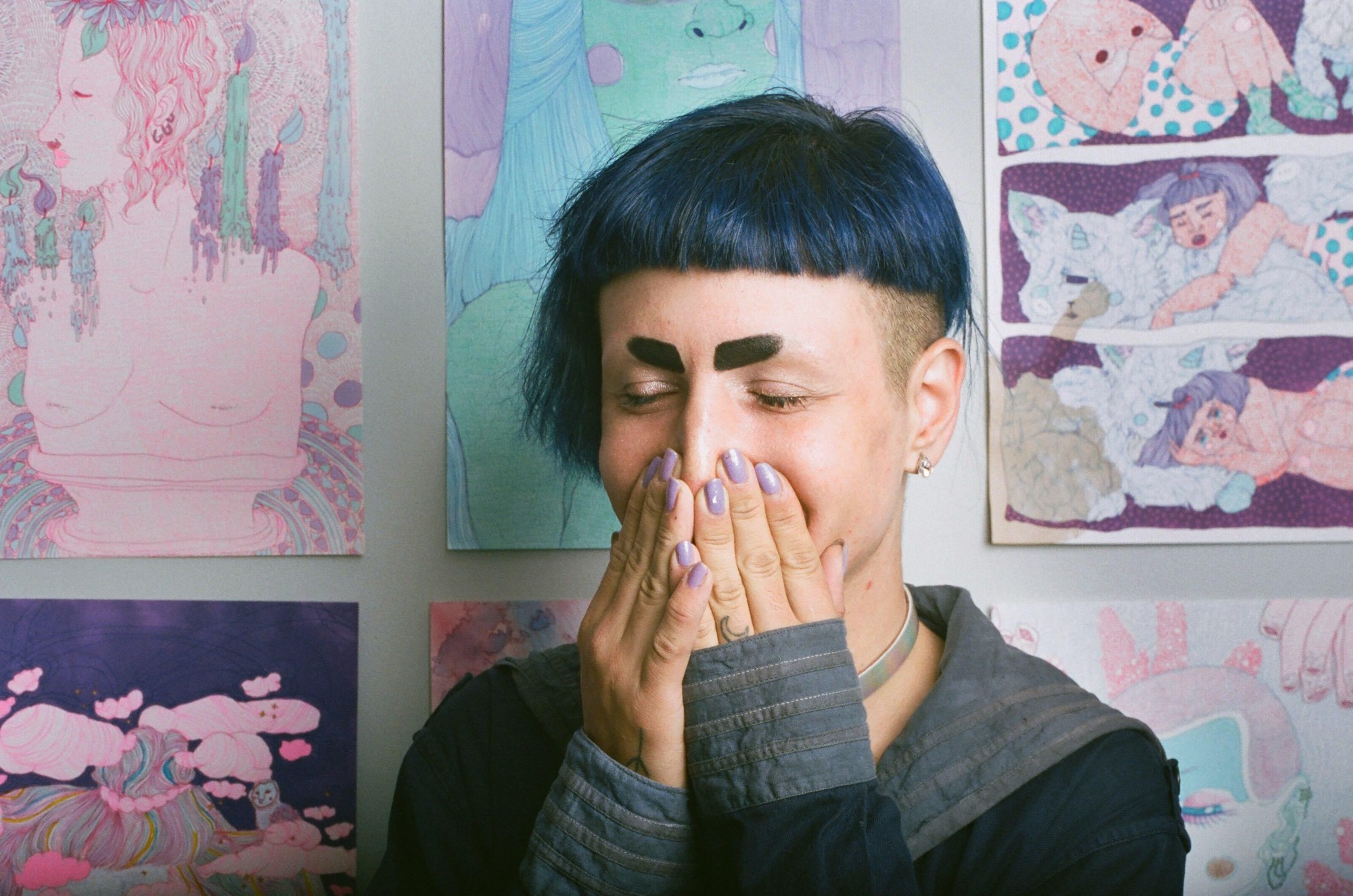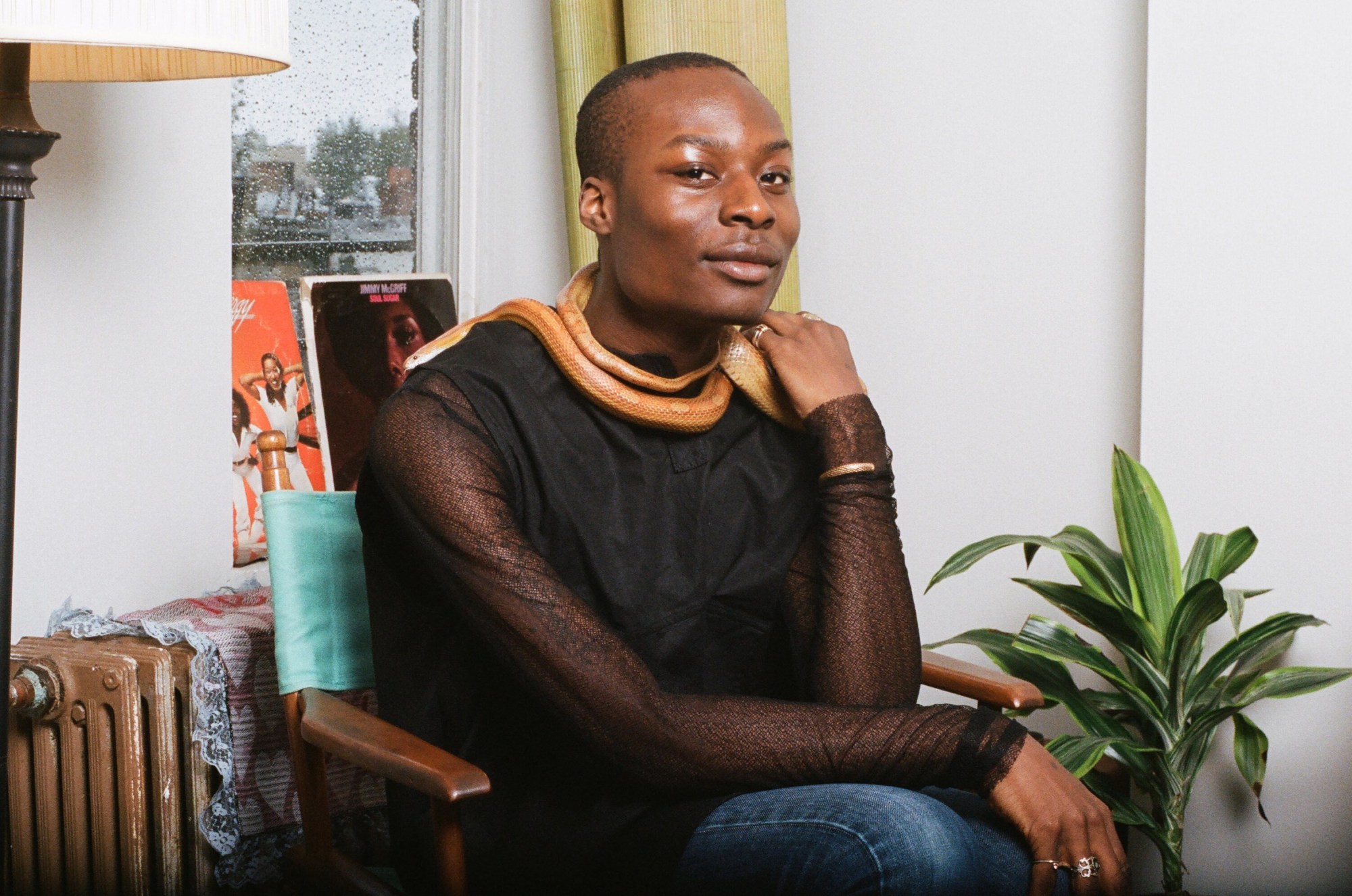While dialogues around gender and variations of non-conformity have officially entered the mainstream, the narratives now seen on your mother’s television are far from all-encompassing. We’ve talked to five young New York creatives to discuss the endless possibilities of queer identity, and the intersections that can occur within.
Nico Fuentes, 23
stylist, sex educator
“I identify as everything I already am. I identify with more than what is visual, and I project both my internal landscape and where it meets my external landscape: my lived experiences and everything that has been before me and everything that I already am. I’ve already gone through the journey of, when I was younger, feeling like I had to add to what I felt was the canvas of my body. But now I realized that I already am everything that I am.
I was born into a landscape that didn’t allow for me to understand or engage with my body. There was very little room to even express identity. It’s too complicated to ask, ‘When did you start becoming?’ I think that that’s really important to note for people who are cisgender. By nature that question invalidates. It’s all fluid, it’s a lived experience. I remember it all because I’m here, and my body is history and I have lived as a person. Not as a transgender concept, but as an actual person. I’m still working on being in my body every day. Every day I wake up and it’s: ‘You’re here. This is you. Good morning, I love you, let’s do this.'”

Theo Baer, 24
musician
“I strongly identify as a musician. I started piano when I was six years old. It was a request of my birth mother to my adoptive parents that I had to have piano lessons. There are a lot of intersections with race, being a person of color adopted into a white family, and that family being of a Mennonite background. After I came out as trans, my parents, reached out to some other Mennonites, and three years ago my mom went by herself to this conference called ‘Connecting Families’ which is for LGBTQ Mennonites and allies. This past year we all went and I spoke on a panel about envisioning a more inclusive church. They’re still catching up in a lot of ways, I’m definitely the token trans person, but I was prepared for that going in.
Having left the church for so many years and coming back on my own terms, I’m still feeling a strong connection to it in this very social way. It’s funny because I feel my queer identity and my musician identity have less intersection than my queer identity and my relationship to my family.”

Alex-Quan Pham, 20
poet, writer
“I feel like my queerness comes directly from my family and my ancestors. I don’t see my queerness as an individual identity, I see it through lineages of femmes who have brought me into existence. I really strongly feel that I wouldn’t be queer if my mother didn’t help me craft my queerness, so I identify my queerness as an ongoing project that I’m always working on with my ancestors and with all the amazing femmes everywhere.
I’ve been thinking a lot about choosing queerness as opposed to passively being queer. In terms of political identities, I don’t think any of them should be seen as static things. Like the word feminist, or the word ally. All of them should be verbs. I view queerness as an action along with an identity, a way of being in the world and a way of relating to people. I really don’t identify with the idea of being born queer. Assuming that everyone is born queer really takes a power away from a lot of people. I guess choosing queerness is a way of reclaiming that into whatever I want it to be, what I want it to look like.”

Emmersun Lunarbow, 27
illustrator
“I identify as an agender person who is also asexual and aromantic. I literally never talk about this to anyone. For me being an asexual person, I don’t experience sexual attraction to other people, or anything. It informs my relationships in such a way where I feel like other people can only get so close to me based on their view of relationships and the bigger picture of how society views relationships. My identities influence my art because I project my experiences into it, or things that I want to see in myself.
I don’t project a gender onto the things that I draw, or the creatures, people, what have you. I see them as being sexless and genderless, but I still consider them, and myself, all femme. I try to be very conscious of representing different body types. I feel like such an asshole saying that, because it should be something that I and people should just be doing.”

Jahmal B. Golden
21, text artist
“Queerness and clothing, or embellishment, are kind of a package deal. We don’t walk around naked and we still experience the spite of what people perceive of us. When we distill our identity into clothing it can shock people, it can defend you against people, it can make you easier to talk to. This isn’t something just for queer people but it’s definitely a tool that we use. Especially when we’re not aspiring towards a hetero cisnormative lifestyle or look. We’re always on the defence, we’re always under so much pressure so when we dress ourselves up it’s because we’re ready for war.I am ready for battle when I put on my clothes. I’m ready to run, I’m ready to be comfortable, I’m ready to be seen, I’m ready to be invisible. All at once.
This last year was a fucking spiral what with all of the intentional murders of trans and black people. That weighed a lot on me. One day I just broke down on the street. That particular meltdown launched me into connecting the dots between a series of poems I’d been writing over the past year. Which I noticed were ways of me escaping my reality through this very crafted imaginary self. I was making myself more magical, I was traversing through time, I was really separating myself from what was happening in the present. I’m trying to embody a grace that I don’t think people are trying to see in this time and world. They’re getting more warmed up to it, but I can’t even say that with a straight face because of how many beautiful people have been killed just for pursuing grace. For pursuing lives.”
Credits
Text and photography Mars Hobrecker and Leah James
